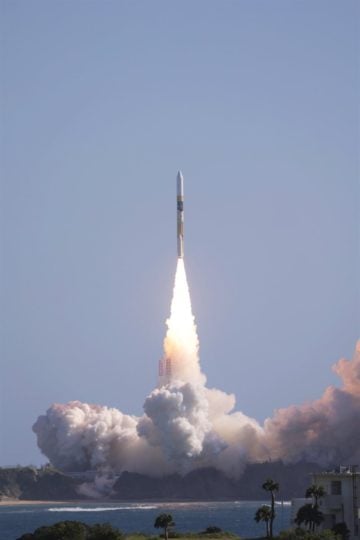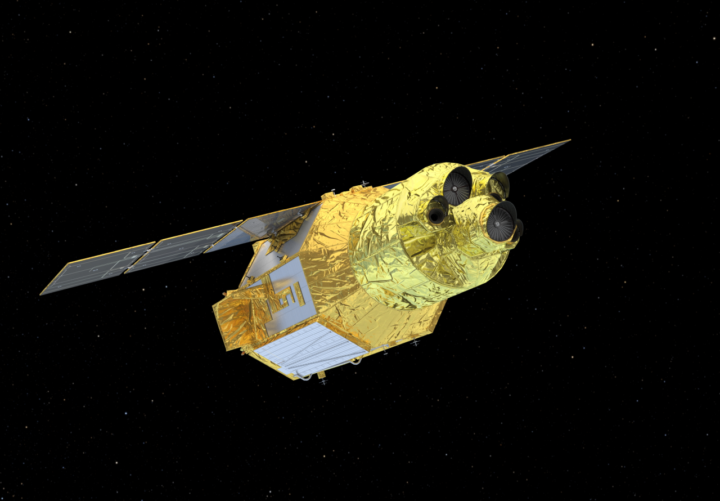The Japan Aerospace Exploration Agency’s (JAXA) X-Ray Imaging and Spectroscopy Mission (XRISM) lifted off on a H-IIA rocket from the Tanegashima Space Center in Japan at 08:42 JST / 00:42 BST / 01:42 CEST on 7 September 2023.
The successful launch marks the beginning of an ambitious mission to explore galaxy clusters’ growth, the Universe’s chemical make-up, and the extremes of spacetime.

XRISM is a collaboration between JAXA and NASA, with significant participation from ESA. Image credit: JAXA
“I would like to congratulate JAXA for this successful launch,” says Carole Mundell, ESA’s Director of Science. “I wish the mission team the best of luck getting XRISM to its operating orbit around Earth and preparing it for science observations.”
ESA and European institutions contributed scientific guidance and vital technologies to XRISM, including for the scientific instruments and for the systems that keep XRISM pointing and oriented correctly. In return for these contributions, ESA will be allocated 8% of XRISM’s available observing time.
This will enable European scientists to propose cosmic targets to observe in X-ray light and make breakthroughs in this area of astronomy.

The XRISM (X-ray Imaging and Spectroscopy Mission) spacecraft investigates the X-ray universe in this artist’s concept. Image credit: NASA’s Goddard Space Flight Center Conceptual Image Lab
Matteo Guainazzi, ESA XRISM project scientist says: “ESA already has a strong legacy and presence in high energy astronomy. Our XMM-Newton and Integral missions have been studying the Universe in X-rays and gamma-rays for over two decades, and we are currently planning the Athena mission.
With this experience, we have made important contributions to what we expect will be a very productive XRISM mission.”
Whilst XMM-Newton remains an excellent observer of lower-energy X-rays, XRISM has been optimised to observe large diffuse structure in the cosmos (such as galaxy clusters), with an unprecedented ability to distinguish the ‘colours’ of higher-energy X-ray light.
By combining observations from the two observatories, we will have complementary measurements that reveal a more complete picture of the hot and energetic Universe. Astronomers that request observing time with XRISM may in the future be offered observing time on XMM-Newton.
Looking further ahead, XRISM will lay the path for ESA’s Athena mission, currently under study and set to be the largest X-ray observatory ever built.
XRISM will provide the first high-resolution spectroscopy X-ray measurements of objects in the nearby Universe; Athena will build upon these discoveries to observe more distant objects, at the epoch when the largest gravitationally bound structure in the Universe formed, or when the first super-massive black holes at the centres of galaxies became active.
XRISM’s first-of-its-kind Resolve instrument will act as an important technology demonstrator for Athena.
Matteo adds: “As ESA project scientist, I am thrilled by all the exciting science promised by XRISM. As a researcher I am personally looking forward to accurately measuring the physical properties of outflows from super-massive black holes at the centres of galaxies, and discovering how they regulate the formation of stars within that galaxy.”
Once XRISM reaches its operating orbit 550 km above Earth’s surface, scientists and engineers will begin a ten-month phase of testing and calibrating the spacecraft’s scientific instruments and verifying the science performance of the mission.
XRISM will then spend at least three years observing the most energetic objects and events in the cosmos based on proposals elaborated by scientists all over the world.
Source: European Space Agency

